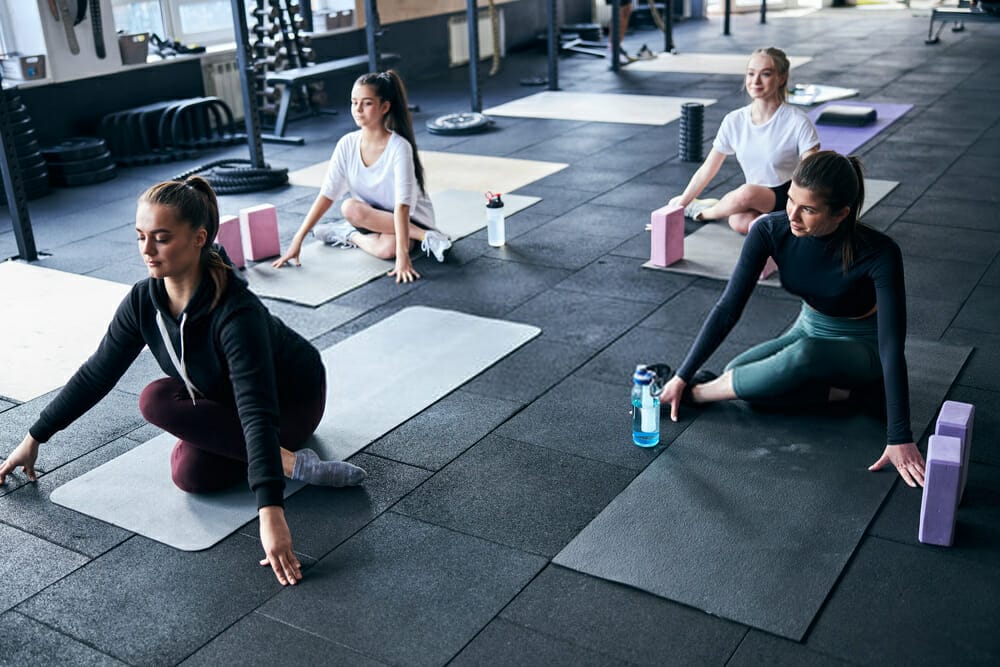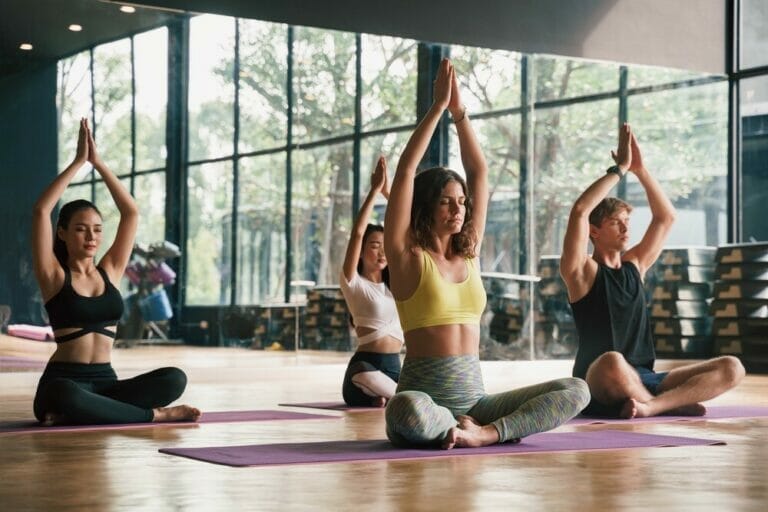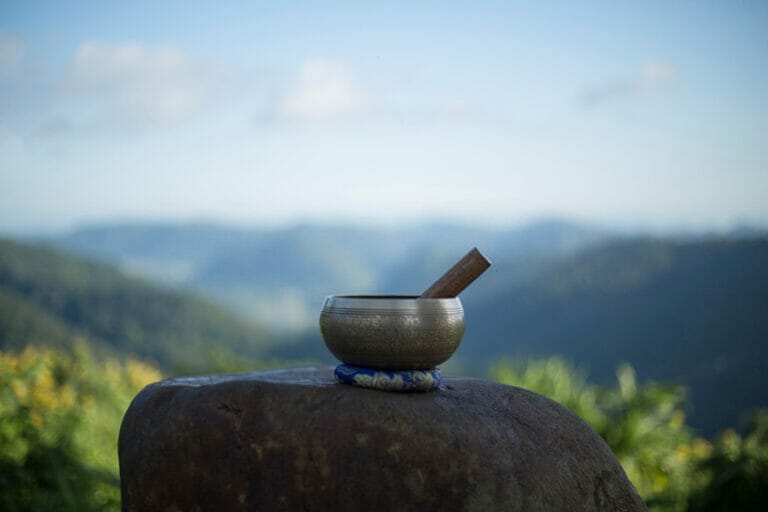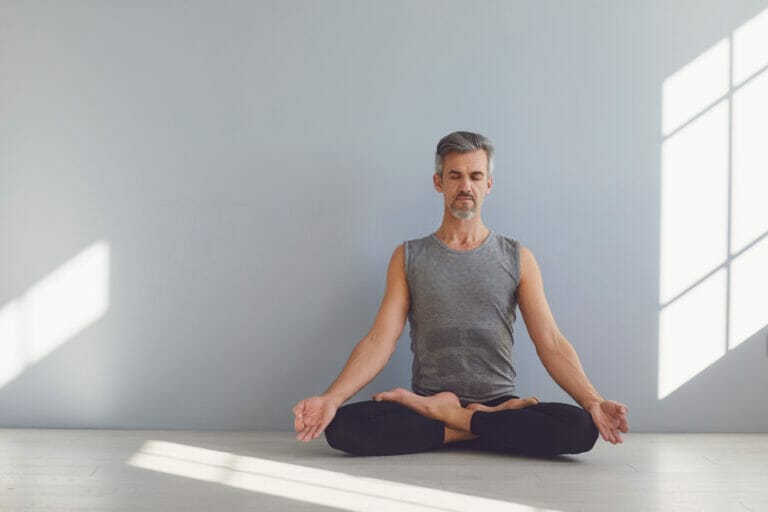Do You Use A Yoga Mat For Your Session – Know Its Ideal Thickness
Yoga is an excellent exercise for your body and mind. It tones your muscles, stretches your muscles, increases your flexibility, and develops your balance.
Many people enjoy practising yoga, but some are confused about what kind of yoga mat they should use?
There are many different kinds of yoga mats available. Some are very thin; others are thick. Some are made out of natural materials; others are man-made. As a result, there is a lot of confusion regarding choosing the right type of yoga mat.
In this article, I’ll discuss what you should be looking for in a yoga mat, the ideal thickness for a yoga mat, why it matters, and give you some tips on choosing the right one for you.
By the time you've finished reading this article, you'll know all the options available to you. Then, you will be able to make an educated decision and be ready to choose the perfect mat according to your practice and personal needs.
Let’s get started!
HOW TO CHOOSE THE BEST YOGA MAT THICKNESS
The quest for the perfect yoga mat thickness can take you from extra-thick mats that provide more cushioning to your joints to ultra-thin travel mats designed for convenience on the go.

Because so many options are available; it becomes hard to select the best choice for your daily practice.
If you’re reading this, you likely know that a mat is not just something to place between your body and the floor when you work out.
It is far more than that: Your yoga mat is the one vital piece of workout tool that helps you feel indoctrinated, supported and provides the right cushion for your joints.
The ideal mat should help you get better at yoga or Pilates. If you commit now to choosing the right one, you’ll have better practice in the long term.
Choose a mat that's too thin, and you may experience discomfort in your joints, wrists, ankles, and pressure on your back. On the other end, choosing a mat that is too thick for you may slow down your progress.
YOGA MAT TYPES
Yoga mats come in different shapes and sizes. When you buy one, you need to decide if you want a neutral mat designed for general use, accommodating most people, or a unique yoga mat designed for specific exercises requiring certain skills.
EXTRA THICK YOGA MATS
The thickness of your yoga mat determines how much cushioning you will receive. It may also determine how long it takes you to fall asleep at night after a rigorous practice.

Extra thick mats are relatively new on the market and are becoming increasingly popular. Many yoga mats range in thickness from 6mm to 10 or 12 cm.
This thickness is about as thick as a woollen blanket and maybe too thick for your regular practice.
Traditionally, yoga was always practised on a non-cushioned surface. The idea was that the body should find its balance with little or no help from anything else.
Over the years, the idea of having something to sit on during your practice evolved, and some people even used some thick padding under their yoga mats.
It made it easier for them to hold poses longer and stretch further. It also provided a little extra comfort.
The benefits of thicker yoga mats are multifold: You can practice longer without falling or injuring yourself. In addition, you can increase your range of motion with less pain in your joints.
MEDIUM-THICK YOGA MATS
Medium mats are large enough to be comfortable but not too bulky to use during a session.
These mats are made from a medium thickness of foam and are affordable.
They’re suitable for people who want to feel the floor but do not want their joints to be too damaged.
These mats have cushioning at 3 – 5mm and have more density than more standard mats.
They’re perfect for most yoga practices such as Bikram, gentle, restorative, and yin yoga that is done without any support or props.
They also provide enough padding so you can practice with less pain in your knees and hips.
THIN YOGA MATS
Thin mats are usually made from natural materials such as jute and cotton and have a little bit of texture on the surface, so your hands don’t slip too much when doing different poses during your practice.
The thickness of thin mats ranges from 0.5 to 2 mm, which is about the size of a mouse pad.
Due to their texture, they’re also suitable for lying down poses.
These mats are usually affordable since it is easy to manufacture them.
ULTRA-THIN TRAVEL YOGA MATS
These yoga mats are usually found in travel sizes and are used by people who want to bring their mat with them during vacation or business trips.

They make it easy for you to do your yoga practice anywhere you go, whether you're at home or on vacation. Most travel yoga mats are about 0.5mm in thickness and weigh about 1 pound.
They typically weigh less than a pound and have a layer that makes them water-resistant, so your mat will stay dry even if you sweat during practice.
They also make it easy to do yoga anywhere since they take little space when folded.
COMBINATION YOGA MATS (THICKER IN THE MIDDLE)
These mats are designed to provide the comfort of extra padding in the middle part of your body while still giving you the feeling of doing yoga on a natural surface.
It has an average thickness in the centre for stability and less thickness at the edges to keep your balance when you do poses that require you to hold onto something or have your feet positioned far away from your body.
This mat is designed for medium to hard workouts. You can do yoga on it without damaging your joints, but it takes a little longer to become fully accustomed to the mat after practising for a longer time.
CONCLUSION: THE BEST THICKNESS FOR A YOGA MAT?
The best yoga mat to go for depends on your preferences, the kind of yoga you do, and how often you practice.
A beginner can start practising with a thinner mat, but eventually, the benefits of a thicker one will allow them to do their practice faster and better.
An intermediate practitioner would benefit more from a medium-thick mat with the comfort of padding in the middle or may want to take advantage of added traction in their hands when doing poses.
A regular practitioner would benefit most from a thicker mat since it allows them to last longer during poses without feeling pain in their joints. If you think you will practice a lot during the year, a thicker mat is a good investment.
I hope this article helped you understand the difference between a thin vs medium vs thick yoga mat and helped you decide on your ideal yoga mat thickness.







